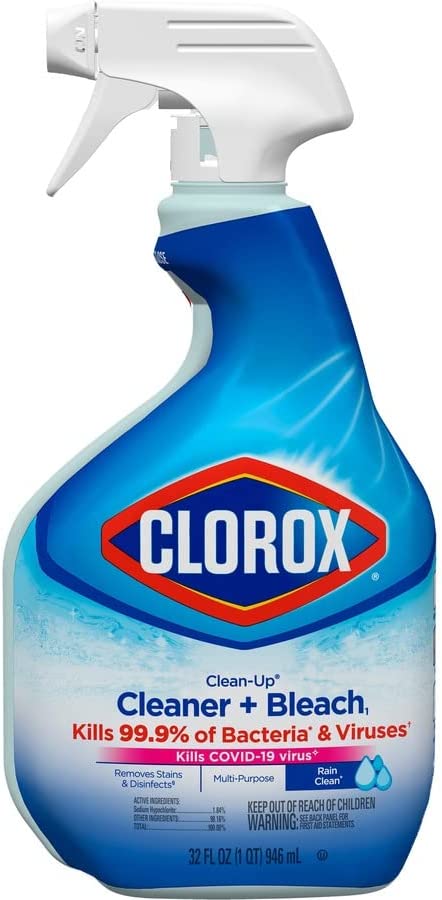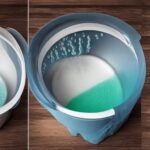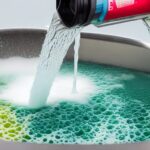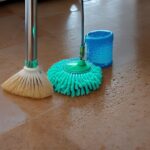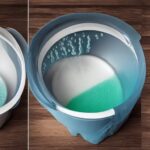Clorox cleaner is a household cleaning product that is widely used for its effectiveness in cleaning and disinfecting various surfaces. The Clorox brand has been trusted by consumers for over 100 years, and their cleaning products are known for their ability to remove tough stains, dirt, and grime.
Clorox cleaner comes in various forms, including sprays, wipes, and concentrated liquids, each designed for specific cleaning tasks. Many Clorox cleaners contain bleach, which is a powerful disinfectant that can kill bacteria and viruses on surfaces.
In addition to their cleaning capabilities, Clorox cleaners are also known for their safety and ease of use. However, it is important to follow the instructions on the label of the specific product to ensure its proper and safe use.
Overall, Clorox cleaner is a popular choice for households and businesses alike, thanks to its effectiveness in cleaning and disinfecting surfaces, as well as its reputation for quality and safety.
Understand the difference between cleaning and disinfecting, and why both are important in maintaining a clean and healthy environment
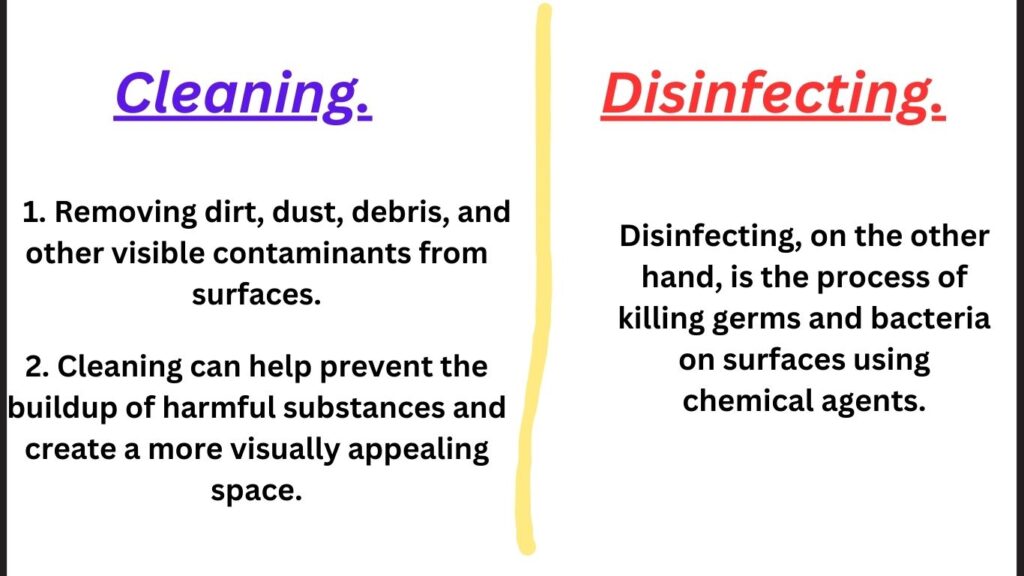
Cleaning and disinfecting are two important steps in maintaining a clean and healthy environment. While both are essential, they serve different purposes.
Cleaning is the process of removing dirt, dust, debris, and other visible contaminants from surfaces. It is an important step in maintaining a clean and hygienic environment, but it does not necessarily kill germs or bacteria. Cleaning can help prevent the buildup of harmful substances and create a more visually appealing space.
Disinfecting, on the other hand, is the process of killing germs and bacteria on surfaces using chemical agents. Disinfectants are designed to destroy harmful microorganisms that can cause illness and infection. Disinfecting is especially important in high traffic areas, such as public restrooms, kitchens, and hospitals.
Both cleaning and disinfecting are important in maintaining a clean and healthy environment. Cleaning removes visible dirt and debris, while disinfecting kills germs and bacteria that may not be visible to the naked eye. A combination of both cleaning and disinfecting is necessary to ensure a clean and hygienic environment.
Failing to clean and disinfect can result in the buildup of harmful substances, which can lead to illness and infection. It is important to regularly clean and disinfect high-touch surfaces, such as doorknobs, light switches, and countertops, to reduce the risk of spreading germs and bacteria.
By understanding the difference between cleaning and disinfecting, and the importance of both, individuals can take the necessary steps to maintain a clean and healthy environment.
Choose the right Clorox cleaner for the job. Different cleaners are formulated to tackle specific types of messes, surfaces, and levels of disinfection
Choosing the right Clorox cleaner for the job is crucial for effective cleaning and disinfection. Different cleaners are formulated to tackle specific types of messes, surfaces, and levels of disinfection.
Clorox offers a variety of cleaners, including all-purpose cleaners, bathroom cleaners, and kitchen cleaners. All-purpose cleaners are designed for everyday use and can be used on a variety of surfaces, while bathroom cleaners are specifically formulated to tackle tough soap scum, mildew, and hard water stains. Kitchen cleaners are designed to remove grease and food residue from kitchen surfaces.
In addition to different formulations for different surfaces and types of messes, Clorox cleaners also offer varying levels of disinfection. Some products offer hospital-grade disinfection, while others are designed for everyday use. It is important to choose a product that offers the level of disinfection needed for the task at hand.
By choosing the right Clorox cleaner for the job, individuals can ensure effective cleaning and disinfection, while also protecting surfaces and minimizing the risk of damage.
Wear gloves and protective gear when cleaning with Clorox, and ensure the area is well ventilated to minimize exposure to fumes.
When cleaning with Clorox, it is important to take necessary precautions to protect oneself from exposure to fumes and chemicals. Wearing gloves and protective gear is essential to ensure safety during the cleaning process.
Clorox cleaners contain powerful chemicals that can cause skin irritation and respiratory problems if not handled properly. Gloves can protect hands from direct contact with the cleaner and minimize the risk of skin irritation. Protective gear, such as goggles or a face shield, can protect the eyes and face from exposure to fumes.
In addition to wearing gloves and protective gear, it is also important to ensure that the cleaning area is well-ventilated. This can be achieved by opening windows, turning on fans, or using air purifiers. Adequate ventilation helps to disperse fumes and reduce exposure to harmful chemicals.
By wearing gloves and protective gear and ensuring proper ventilation, individuals can safely clean and disinfect their homes or workplaces with Clorox cleaners. Taking these precautions helps to minimize the risk of skin irritation, respiratory problems, and other health hazards associated with exposure to cleaning chemicals.
Read and follow the instructions on the label carefully. Different products have different dilution ratios, contact times, and safety precautions.
Reading and following the instructions on the label of Clorox products is essential for effective and safe cleaning. Different products have different dilution ratios, contact times, and safety precautions, and it is important to understand these details before using the product.
Dilution ratios indicate the amount of product that should be mixed with water for optimal performance. Using too much or too little product can affect the effectiveness of the cleaner and may even cause damage to surfaces. Contact times indicate the amount of time the cleaner should be left on a surface before being wiped off. This time allows the product to effectively kill germs and bacteria.
Safety precautions, such as wearing protective gear or avoiding contact with certain surfaces, are also important to follow. Failure to follow safety precautions can result in injury or damage to surfaces.
By reading and following the instructions on the label, individuals can ensure effective cleaning and disinfection, while also minimizing the risk of injury or damage to surfaces. Taking the time to understand the details of the product can also help individuals to make informed decisions about which product to use and how to use it safely and effectively.
Prioritize high-touch surfaces and frequently used areas, such as doorknobs, light switches, countertops, and faucets.
When cleaning and disinfecting with Clorox, it is important to prioritize high-touch surfaces and frequently used areas. These surfaces are more likely to harbor germs and bacteria, making them a top priority for cleaning and disinfection.
High-touch surfaces include doorknobs, light switches, countertops, faucets, and other surfaces that are frequently touched by multiple people. These surfaces can quickly become contaminated with germs and bacteria, making them a potential source of illness and infection.
By prioritizing high-touch surfaces and frequently used areas, individuals can effectively reduce the spread of germs and bacteria in their homes or workplaces. Regular cleaning and disinfection of these surfaces can help to prevent the spread of illness and promote a healthier environment.
Using Clorox cleaners specifically formulated for disinfection can provide an extra layer of protection for high-touch surfaces. By following the instructions on the label and using the appropriate product for the task, individuals can ensure effective cleaning and disinfection of these important areas.
Use a microfiber cloth or sponge to apply the Clorox cleaner and ensure even coverage. Avoid using paper towels or other disposable materials, which can leave behind lint and waste
Using the right cleaning tools is important for effective cleaning and disinfection with Clorox. When applying the cleaner, it is recommended to use a microfiber cloth or sponge. These tools provide even coverage and help to prevent streaks and residue buildup.
Microfiber cloths are especially effective at picking up dirt and debris, while also absorbing moisture. They are also reusable and can be washed and sanitized after use, making them a more eco-friendly option compared to disposable materials.
In contrast, disposable materials like paper towels can leave behind lint and waste, which can interfere with the cleaning process and even spread germs and bacteria. Additionally, they are not as effective at absorbing moisture or picking up dirt and debris.
By using a microfiber cloth or sponge to apply Clorox cleaner, individuals can ensure that surfaces are thoroughly cleaned and disinfected. These tools provide even coverage and help to prevent streaks and residue buildup, while also minimizing waste and environmental impact.
It is also important to note that cleaning tools should be washed and sanitized regularly to prevent the spread of germs and bacteria. By following these simple steps, individuals can effectively clean and disinfect their homes or workplaces, while also minimizing waste and promoting a healthier environment.
Allow the disinfectant to sit for the recommended contact time, typically 3-5 minutes, to ensure maximum effectiveness
One important aspect of effective cleaning and disinfection with Clorox is allowing the disinfectant to sit for the recommended contact time. This is the amount of time that the disinfectant should be left on the surface before wiping it off, and it is typically 3-5 minutes.
Contact time is important because it allows the disinfectant to effectively kill germs and bacteria. If the disinfectant is not given enough time to work, it may not be as effective in removing harmful microorganisms. Additionally, if the disinfectant is wiped off too soon, it may leave behind residue or streaks.
By allowing the disinfectant to sit for the recommended contact time, individuals can ensure maximum effectiveness of the product. This is especially important for high-touch surfaces and frequently used areas, where germs and bacteria are more likely to be present.
Following the recommended contact time is a simple but effective step that can help to promote a healthier environment and prevent the spread of illness. By following the instructions on the label and allowing the disinfectant to sit for the recommended time, individuals can ensure effective cleaning and disinfection with Clorox.
Rinse the surface thoroughly with water after disinfecting, especially if it will come into contact with food or people
After disinfecting surfaces with Clorox, it is important to rinse the surface thoroughly with water, especially if it will come into contact with food or people. This is because disinfectants can leave behind residue or chemicals that may be harmful if ingested or come into contact with skin.
Rinsing the surface with water helps to remove any remaining disinfectant and residue, ensuring that the surface is safe for use. This is especially important for surfaces in kitchens, dining areas, and other areas where food or people are present.
It is important to note that some Clorox products may not require rinsing after use. However, it is still important to follow the instructions on the label and use the product as directed.
By rinsing surfaces thoroughly with water after disinfecting, individuals can ensure that their homes or workplaces are safe and healthy environments. This simple step can help to prevent the spread of illness and promote a healthier lifestyle.
Dispose of used cleaning materials properly, either by washing them in hot water or disposing of them in a lined trash can
Proper disposal of used cleaning materials is an important aspect of effective cleaning and disinfection with Clorox. After using a microfiber cloth or sponge to apply the Clorox cleaner, it is important to dispose of them properly to prevent the spread of germs and bacteria.
One option is to wash the cleaning tools in hot water and detergent after use. This helps to remove any remaining dirt and debris, as well as disinfecting the tool. Another option is to dispose of the cleaning tools in a lined trash can. This is especially important if the cleaning tools are contaminated with bodily fluids or other hazardous materials.
It is important to note that disposable cleaning tools, such as paper towels or disinfectant wipes, should be disposed of in a lined trash can immediately after use. This helps to prevent the spread of germs and bacteria, as well as minimizing waste.
By properly disposing of used cleaning materials, individuals can help to maintain a clean and healthy environment, while also minimizing waste and promoting sustainability.
Develop a regular cleaning schedule and stick to it. Depending on the level of traffic and use, some surfaces may need to be disinfected daily or multiple times a day, while others can be cleaned less frequently
Developing a regular cleaning schedule is an important aspect of effective cleaning and disinfection with Clorox. Depending on the level of traffic and use, some surfaces may need to be disinfected daily or multiple times a day, while others can be cleaned less frequently.
For example, high-touch surfaces such as doorknobs, light switches, and faucets should be disinfected daily or even multiple times a day in areas with high traffic. However, less frequently used surfaces such as walls or ceilings may only need to be cleaned on a weekly or monthly basis.
Developing a cleaning schedule that fits the specific needs of the environment is important to ensure that all surfaces are cleaned and disinfected effectively. This can help to prevent the spread of illness and maintain a clean and healthy environment.
Sticking to the cleaning schedule is also important to ensure that surfaces are consistently cleaned and disinfected. This can be accomplished by setting reminders or assigning tasks to individuals responsible for cleaning.
By developing and sticking to a regular cleaning schedule, individuals can help to maintain a clean and healthy environment, while also promoting consistency and accountability in cleaning and disinfection practices.
Frequently Asked Questions on Clorox Cleaner.
What ingredients are in Clorox cleaner?
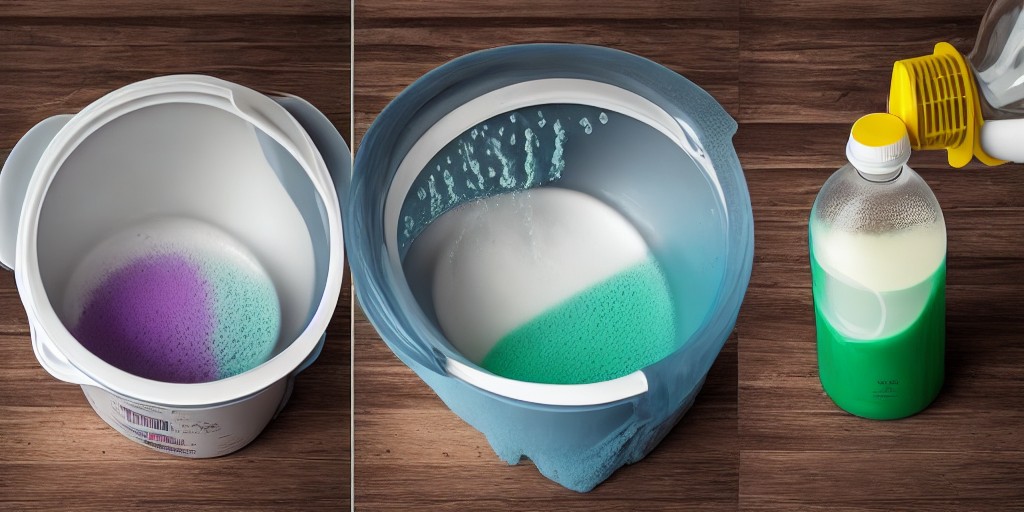
Clorox cleaner is a multi-purpose cleaner that can be used on a variety of surfaces, including countertops, floors, walls, and bathroom surfaces. But what exactly are the ingredients in Clorox cleaner? Clorox cleaner is made up of several different ingredients, including sodium hypochlorite, a form of bleach. This ingredient is what gives Clorox cleaner its powerful cleaning properties and makes it so effective at killing germs. Sodium hypochlorite is a powerful disinfectant that is effective against bacteria, viruses, and fungi.
It is also effective at removing stains and other dirt from surfaces, making it a great all-purpose cleaner. In addition to sodium hypochlorite, other ingredients in Clorox cleaner include ammonium chloride, sodium hydroxide, and sodium carbonate. Ammonium chloride is an alkaline cleaner that helps break down grease and other soils. Sodium hydroxide is a powerful cleaning agent that helps remove tough stains and dirt. Sodium carbonate is a mild alkali to help loosen and remove dirt and grime.
Clorox cleaner also contains surfactants, which are substances that help reduce the surface tension of water, making it easier for the cleaner to penetrate and remove dirt. Surfactants are also responsible for the foaming action of the cleaner, which helps remove soils more effectively.
Lastly, Clorox cleaner contains fragrances, which help make the product more pleasant to use. Fragrances are added to mask the strong smell of the cleaner’s active ingredients.
Overall, Clorox cleaner is a powerful and effective cleaner that is made up of several different ingredients, including sodium hypochlorite, ammonium chloride, sodium hydroxide, sodium carbonate, surfactants, and fragrances. These ingredients work together to make Clorox cleaner an effective cleaner that can be used on a variety of surfaces.
What surfaces can Clorox cleaner be used on?

Clorox cleaner is a multi-purpose cleaner that can be used on a variety of surfaces, including countertops, floors, walls, and bathroom surfaces. But what surfaces can Clorox cleaner be used on? Clorox cleaner is safe to use on a variety of hard surfaces, including countertops, walls, floors, and bathroom surfaces. It can also be used on sealed wood surfaces, such as kitchen cabinets, tables, and chairs. For best results, surfaces should be pre-cleaned before using Clorox cleaner.
Clorox cleaner is also safe to use on stainless steel surfaces, such as sinks and appliances. It is important to note that Clorox cleaner should not be used on aluminum surfaces, as it can cause discoloration. Clorox cleaner is also effective at cleaning upholstery, such as couches, chairs, and mattresses.
It is important to read the label of the product to make sure it is safe for use on upholstery. Clorox cleaner can also be used to clean and disinfect toys, such as stuffed animals, dolls, and action figures. It is important to make sure the toys are pre-cleaned before using Clorox cleaner, as it can leave behind a residue.
Lastly, Clorox cleaner can be used to clean and disinfect pet beds, crates, and other pet items. Again, it is important to pre-clean the items before using Clorox cleaner to make sure it is safe to use.
In conclusion, Clorox cleaner is a powerful and effective cleaner that can be used on a variety of hard surfaces, including countertops, walls, floors, and bathroom surfaces. It can also be used on sealed wood surfaces, stainless steel surfaces, upholstery, toys, and pet items. It is important to read the label of the product to make sure it is safe for use on the surface in question.
Is Clorox cleaner safe to use around pets?

The answer is not straightforward. Clorox products can be safe for pets if used correctly, but they can also be dangerous if used improperly. Some Clorox products contain chemicals that can be harmful to pets if ingested or if their fumes are inhaled. It is essential to follow the product’s instructions carefully and take precautions when using these products around pets.
One of the most common Clorox products is bleach. Bleach is a powerful disinfectant that can be used to clean and sanitize surfaces, but it can be dangerous if ingested or inhaled by pets. Bleach can cause irritation to the eyes, nose, and throat, and can lead to vomiting, diarrhea, and even more serious health problems in pets.
If you plan on using bleach around your pets, it is crucial to dilute the bleach properly and keep your pets away from the area until the bleach has completely dried. It is also important to rinse the surface thoroughly with water after residue that could harm your pet. It is recommended to use bleach in a well-ventilated area and avoid inhaling the fumes.
Another Clorox product that pet owners often use is the Clorox disinfectant spray. This spray is advertised as safe to use around pets, but it is important to follow the instructions carefully. It is recommended to keep your pets away from the area being sprayed until it has completely dried. If your pet comes into contact with the spray, you should rinse the area with water to avoid any irritation or discomfort.
In addition to using Clorox products safely around pets, it is also important to store them properly. Clorox products should be stored in a secure location, out of reach of pets and children. Ingesting these products can be very harmful, and even small amounts can cause serious health problems.
When using any cleaning product around pets, it is important to watch for any signs of distress or discomfort. If your pet appears to be experiencing any adverse reactions, such as vomiting or difficulty breathing, you should seek veterinary attention immediately.
In conclusion, Clorox products can be safe to use around pets if used properly and with caution. It is important to follow the instructions carefully, dilute products appropriately, and keep pets away from the area being cleaned until it has dried. Additionally, it is crucial to store these products safely, out of reach of pets and children. As a responsible pet owner, you should always be mindful of the products you are using and take the necessary precautions to keep your furry friends safe and healthy.
Is Clorox cleaner effective against bacteria and viruses?

The answer is yes. Clorox products are designed to kill a wide range of bacteria and viruses, including the flu virus, E. coli, salmonella, and the coronavirus. These products work by using powerful chemicals that attack the cell walls and proteins of these germs, ultimately killing them.
One of the most common Clorox products used for disinfecting surfaces is Clorox bleach. Bleach is a powerful disinfectant that can kill a variety of bacteria and viruses. When used properly, bleach can be very effective at eliminating these germs. It is important to note, however, that bleach can be corrosive and should only be used on non-porous surfaces.
Another popular Clorox product for disinfecting surfaces is Clorox disinfectant spray. This spray is advertised as being able to kill 99.9% of bacteria and viruses on hard, non-porous surfaces. It is effective against a wide range of germs, including the flu virus, E. coli, and the coronavirus. It is important to note that this spray should not be used on fabrics, as it can cause discoloration.
In addition to disinfectant sprays and bleach, Clorox also produces disinfectant wipes. These wipes are designed to be used on surfaces that come into contact with food, such as countertops, cutting boards, and kitchen sinks. They are effective against a variety of bacteria and viruses, including salmonella, E. coli, and the coronavirus. It is important to use these wipes as directed, and to discard them after use to avoid cross-contamination.
It is important to note that while Clorox products can be very effective at killing germs, they should not be used as a substitute for good hygiene practices. Regular hand-washing and surface cleaning can help prevent the spread of germs and viruses, even in the absence of disinfectants. Clorox products should be used as a supplement to these practices, not a replacement.
When using Clorox products for disinfecting surfaces, it is important to follow the instructions carefully. This includes wearing gloves and eye protection if necessary, and allowing the product to sit on the surface for the recommended amount of time. It is also important to rinse surfaces thoroughly with water after using bleach or other disinfectants.
In conclusion, Clorox products are effective at killing a wide range of bacteria and viruses when used properly. Bleach, disinfectant spray, and disinfectant wipes are all effective options for disinfecting surfaces. It is important to follow the instructions carefully and to use these products as a supplement to good hygiene practices. With proper use, Clorox products can help keep your home and workplace clean and free of germs and viruses.
How much Clorox cleaner should be used for each cleaning job?
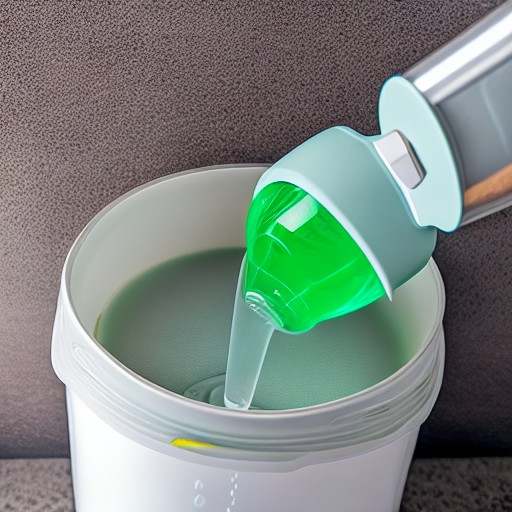
The amount of Clorox cleaner needed for each cleaning job depends on the type of product and the surface being cleaned. For example, Clorox bleach requires dilution before use, while Clorox disinfectant spray can be used directly on surfaces.
When using Clorox bleach, it is important to dilute the product according to the instructions on the label. For example, if the label calls for 1/2 cup of bleach per gallon of water, then use that exact amount for each gallon of water used. It is important to never use more than the recommended amount of bleach, as this can damage surfaces and increase the risk of harmful fumes.
Clorox disinfectant spray can be used directly on surfaces without dilution. However, it is important to spray enough product to thoroughly cover the surface being cleaned. A light misting of the spray may not be enough to effectively disinfect a surface. It is also important to allow the surface to air dry after spraying to ensure that the disinfectant has time to work.
When using Clorox wipes, it is important to use enough wipes to thoroughly clean the surface being cleaned. One wipe may not be enough to clean a larger surface area. It is also important to use additional wipes if needed to ensure that the surface is completely clean and disinfected.
It is also important to remember that using too much Clorox cleaner can be wasteful and potentially harmful. Overuse of bleach or disinfectant spray can damage surfaces and increase the risk of fumes. Additionally, using too many wipes can create unnecessary waste.
In general, it is important to read the instructions on the label of any Clorox cleaner product before use. This will provide information on the appropriate amount of product to use for each cleaning job. It is also a good idea to start with a smaller amount of product and gradually add more as needed to avoid overuse.
In conclusion, the appropriate amount of Clorox cleaner to use for each cleaning job depends on the type of product and the surface being cleaned. It is important to read the instructions on the label of the product before use and to use the appropriate amount to ensure maximum effectiveness and avoid waste. By following these guidelines, you can effectively clean and disinfect your home without using excessive amounts of cleaning products.
Does Clorox cleaner have any scent?
While some cleaning products have a strong and unpleasant scent, many people wonder if Clorox cleaner has a scent.
The answer is yes, Clorox cleaner does have a scent. However, the scent can vary depending on the specific product being used. For example, Clorox bleach has a distinct odor that many people describe as a strong and pungent smell. This scent comes from the active ingredient in bleach, sodium hypochlorite, which has a chlorine-like odor.
Clorox disinfectant spray also has a scent, although it is generally considered to be more pleasant than the scent of bleach. The scent of the disinfectant spray can vary depending on the specific scent chosen, as Clorox offers a variety of scents, including fresh, lavender, and citrus.
Clorox wipes also have a scent, although it is generally less noticeable than the scent of bleach or disinfectant spray. The wipes are typically designed to be used on a variety of surfaces, and the scent is often subtle and refreshing.
It is worth noting that some people may be more sensitive to the scent of Clorox products than others. Those with allergies or respiratory issues may find the scent of bleach or disinfectant spray to be overwhelming or irritating. In these cases, it may be best to use a different type of cleaner or disinfectant that is scent-free or has a milder scent.
In conclusion, Clorox cleaner does have a scent, although the specific scent can vary depending on the product being used. While the scent of Clorox products is generally considered to be strong, it is often viewed as a sign of their effectiveness in cleaning and disinfecting surfaces. However, those with sensitivities to scent may want to consider alternative cleaning products that are scent-free or have a milder scent.
Does Clorox cleaner leave behind any residue?
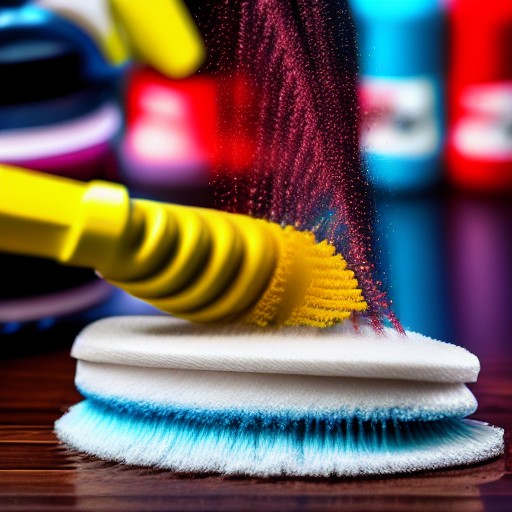
Clorox is a popular brand of cleaning products that is known for its effectiveness in removing dirt and grime from surfaces. However, some people may wonder if Clorox cleaner leaves behind any residue after use.
The answer is that it depends on the specific product being used and how it is used. Some Clorox products, such as disinfectant wipes or disinfectant spray, are designed to be used on surfaces and then left to air dry. In these cases, the product should not leave behind any noticeable residue.
However, if too much product is used or if the product is not wiped away after use, it is possible for Clorox cleaner to leave behind a residue. For example, if too much Clorox bleach is used when cleaning a surface, it may leave behind a white residue that can be difficult to remove. Similarly, if disinfectant wipes are used excessively, they may leave behind a residue that can be sticky or greasy.
In general, it is important to use Clorox products as directed on the label to minimize the risk of leaving behind a residue. This may include using the appropriate amount of product, wiping away excess product after use, and allowing surfaces to air dry before using them.
If a residue is left behind after using Clorox cleaner, there are a few steps that can be taken to remove it. One option is to rinse the surface with warm water and wipe it clean with a damp cloth. Another option is to use a mild detergent or soap to clean the surface and then rinse it thoroughly with water.
In conclusion, Clorox cleaner can leave behind a residue if too much product is used or if it is not wiped away after use. However, when used as directed on the label, Clorox products should not leave behind any noticeable residue. If a residue is left behind, it can typically be removed with warm water, a damp cloth, or a mild detergent.
What is the shelf life of Clorox cleaner?
Clorox cleaner is a popular household cleaning product that is known for its effectiveness in removing dirt, grime, and stains from surfaces. However, many people may wonder how long Clorox cleaner can be stored before it loses its effectiveness.
The shelf life of Clorox cleaner can vary depending on the specific product being used. In general, most Clorox cleaning products have a shelf life of approximately one year. This means that they can be stored for up to one year before they begin to lose their effectiveness.
It is important to note that the shelf life of Clorox cleaner can be affected by a number of factors, including exposure to heat, light, and air. For example, if Clorox cleaner is stored in a hot or humid environment, it may begin to break down more quickly and lose its effectiveness.
To help prolong the shelf life of Clorox cleaner, it is recommended that it be stored in a cool, dry place away from direct sunlight. Additionally, it is important to keep the cap tightly sealed on the bottle to prevent air from getting inside.
If you are unsure about the shelf life of a particular Clorox cleaning product, you can check the label for information on expiration dates or contact the manufacturer for more information. It is always better to be safe than sorry when it comes to using cleaning products, so if you have any doubts about the effectiveness of a Clorox cleaner that has been stored for an extended period of time, it may be best to replace it with a fresh bottle.
In conclusion, the shelf life of Clorox cleaner is generally around one year. However, this can vary depending on a number of factors, including storage conditions and exposure to heat, light, and air. To ensure the effectiveness of Clorox cleaner, it is important to store it in a cool, dry place and keep the cap tightly sealed. If you have any doubts about the effectiveness of a Clorox cleaner that has been stored for an extended period of time, it may be best to replace it with a fresh bottle.
Is Clorox cleaner safe to use around children?
Clorox cleaner is a household cleaning product that is known for its effectiveness in removing dirt, grime, and stains from surfaces. However, many people may wonder if it is safe to use around children.
The answer is that it depends on the specific product being used and how it is used. Many Clorox cleaning products contain bleach, which can be toxic if ingested or inhaled in large amounts. For this reason, it is important to keep all cleaning products, including Clorox cleaner, out of reach of children.
When using Clorox cleaner around children, it is important to follow the instructions on the label carefully. This may include diluting the product with water, using it in a well-ventilated area, and wearing gloves and eye protection.
It is also important to store Clorox cleaner in a secure location where children cannot access it. This may mean keeping it in a locked cabinet or on a high shelf.
In general, Clorox cleaner is safe to use around children when used properly and in accordance with the instructions on the label. However, it is always better to err on the side of caution and take extra precautions when using any cleaning product around children.
If a child accidentally ingests Clorox cleaner or comes into contact with it in any way, it is important to seek medical attention immediately. This may include calling the Poison Control Center or taking the child to the emergency room.
In conclusion, Clorox cleaner can be safe to use around children when used properly and stored in a secure location. However, it is important to follow the instructions on the label carefully and take extra precautions to keep children safe. If a child comes into contact with Clorox cleaner in any way, it is important to seek medical attention immediately.
How do I use Clorox cleaner to clean hard surfaces?

Clorox cleaner is a powerful household cleaning product that can be used to clean a variety of hard surfaces, such as countertops, floors, and appliances. If you’re unsure of how to use Clorox cleaner properly, here are some steps to follow:
Read the label: Before using any cleaning product, it’s important to read the label carefully to ensure that you understand how to use it properly. The label will also provide important safety information and any precautions you need to take.
Dilute the cleaner: Clorox cleaner is a concentrate, which means that it needs to be diluted with water before use. To dilute the cleaner, mix it with water according to the instructions on the label. In most cases, you will need to add one part cleaner to four parts water.
Test a small area: Before using the cleaner on a large surface, it’s a good idea to test it on a small, inconspicuous area first. This will ensure that the cleaner doesn’t damage or discolor the surface.
Apply the cleaner: Once the cleaner has been diluted, apply it to the surface you want to clean. You can use a sponge, cloth, or mop to apply the cleaner, depending on the surface.
Scrub: For tough stains or grime, you may need to scrub the surface with a scrub brush or scouring pad. Be careful not to use too much pressure, as this can damage the surface.
Rinse: After cleaning, rinse the surface thoroughly with water to remove any residue. Be sure to rinse multiple times to ensure that all the cleaner has been removed.
Dry: Once the surface has been rinsed, dry it with a clean towel or allow it to air dry.
It’s important to note that Clorox cleaner should not be used on certain surfaces, such as marble, granite, or wood. If you’re unsure if a surface is safe to clean with Clorox cleaner, check the label or contact the manufacturer for guidance.
In conclusion, Clorox cleaner is a powerful cleaning product that can be used to clean a variety of hard surfaces. To use it properly, dilute the cleaner, test a small area, apply it to the surface, scrub if necessary, rinse thoroughly, and dry. By following these steps, you can effectively clean hard surfaces with Clorox cleaner.
Does Clorox cleaner contain any bleach?
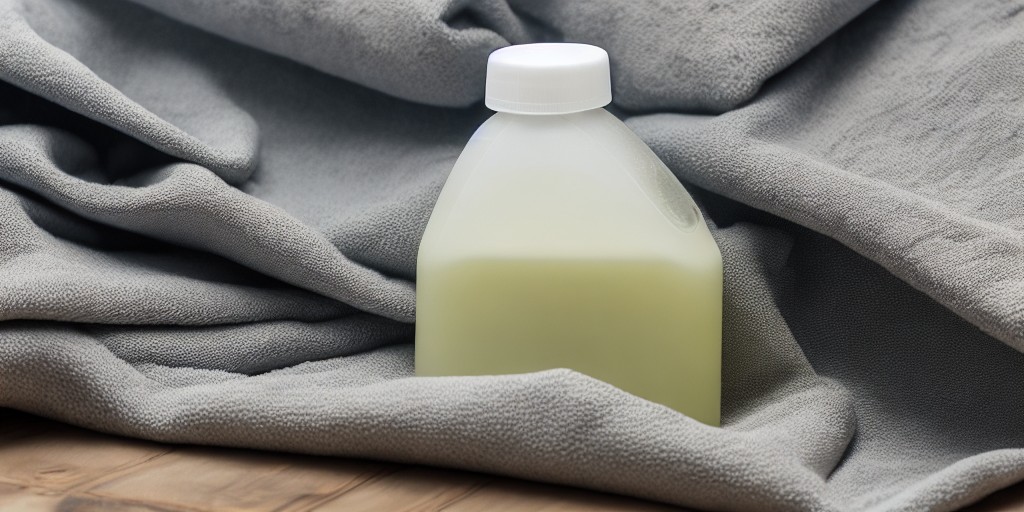
Yes, Clorox cleaner does contain bleach. Bleach is a powerful cleaning agent that is used to whiten and disinfect surfaces, and it is a key ingredient in many Clorox cleaning products.
Bleach is a chlorine-based chemical that works by breaking down the proteins in bacteria and viruses, which kills them. It is also effective in removing stains and whitening surfaces.
While bleach can be a highly effective cleaning agent, it can also be dangerous if used improperly. Bleach can cause skin and eye irritation, and it can be toxic if ingested or inhaled in large amounts. For this reason, it is important to use bleach-containing products, such as Clorox cleaner, carefully and according to the instructions on the label.
To use Clorox cleaner safely, it is important to dilute it with water according to the instructions on the label. This will help to reduce the concentration of bleach in the cleaner and make it safer to use.
It is also important to avoid using Clorox cleaner on certain surfaces, such as marble, granite, and wood, as bleach can damage these materials. Instead, use a cleaner that is specifically designed for these surfaces.
In conclusion, Clorox cleaner does contain bleach, which is a powerful cleaning agent that can be effective in disinfecting and whitening surfaces. However, it is important to use Clorox cleaner carefully and according to the instructions on the label to ensure that it is used safely and effectively. Bleach-containing products can be dangerous if used improperly, so it is important to take precautions and use them responsibly.
How much does Clorox cleaner cost?

The cost of Clorox cleaner varies depending on the type and size of the product. Generally, Clorox cleaner is reasonably priced and is available at most major retailers.
The cost of a 32-ounce bottle of Clorox all-purpose cleaner ranges from $2 to $5, depending on where you purchase it. Larger bottles, such as a 64-ounce bottle of Clorox clean-up cleaner, may cost anywhere from $5 to $10.
Clorox also offers specialty cleaners, such as their bleach-free disinfecting wipes, which may cost a bit more than their standard all-purpose cleaners. A 75-count canister of Clorox disinfecting wipes typically costs between $5 and $8.
Additionally, Clorox offers concentrated versions of their cleaners that need to be diluted with water before use. These products may be slightly more expensive than their non-concentrated counterparts, but they can be more cost-effective in the long run since a little goes a long way.
Overall, the cost of Clorox cleaner is comparable to other household cleaners on the market. While it may be slightly more expensive than some generic brands, many people are willing to pay a bit more for the quality and effectiveness of the Clorox brand.
In conclusion, the cost of Clorox cleaner varies depending on the product and size, but generally, it is reasonably priced and widely available at most major retailers. While it may be slightly more expensive than some generic brands, many people consider the quality and effectiveness of Clorox cleaner to be worth the cost.
Does Clorox cleaner need to be rinsed off after use?
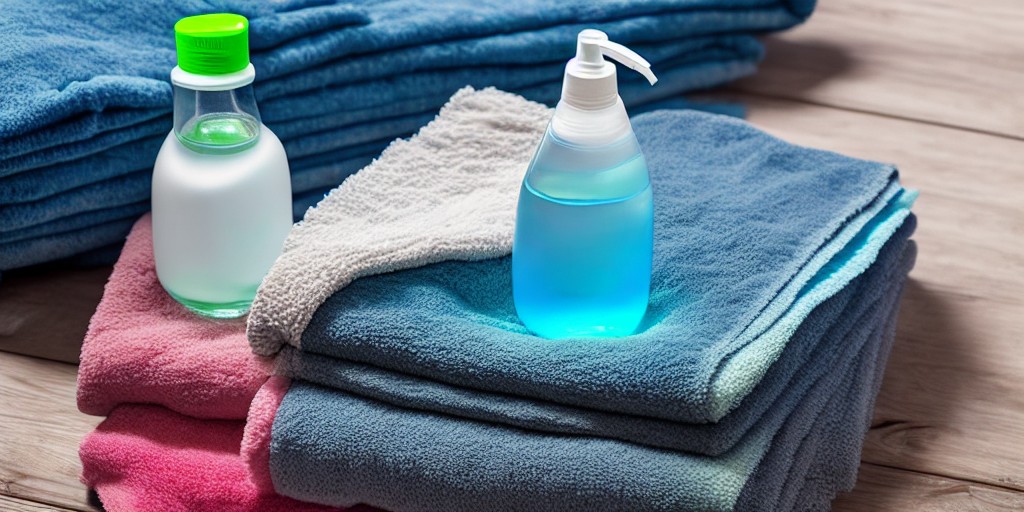
It depends on the specific Clorox cleaner product that you are using. Some Clorox cleaners require rinsing after use, while others do not.
For example, Clorox disinfecting wipes do not require rinsing after use. These wipes contain a disinfectant solution that is effective in killing bacteria and viruses on surfaces. Simply wipe the surface with the disinfecting wipe and let it air dry.
On the other hand, some Clorox cleaners, such as Clorox clean-up cleaner, do require rinsing after use. This cleaner contains bleach, which can leave a residue on surfaces if not rinsed off properly. After using Clorox clean-up cleaner, it is recommended to rinse the surface with water and dry it with a clean cloth.
It is important to read the instructions on the label of the specific Clorox cleaner product that you are using to determine whether or not it requires rinsing after use. Following the instructions on the label will help ensure that the product is used safely and effectively.
In conclusion, whether or not Clorox cleaner needs to be rinsed off after use depends on the specific product. Some Clorox cleaners require rinsing after use, while others do not. It is important to read the instructions on the label of the product to determine whether or not it requires rinsing. Following the instructions on the label will help ensure that the product is used safely and effectively.
Does Clorox cleaner leave behind any streaks?

Clorox cleaner is known for its effectiveness in cleaning and disinfecting surfaces, but many people wonder if it leaves behind streaks.
The answer to this question depends on the specific Clorox cleaner product that you are using, as well as the surface you are cleaning.
Some Clorox cleaners, such as Clorox clean-up cleaner with bleach, may leave behind streaks on certain surfaces if not properly rinsed off. This is because the bleach in the cleaner can be corrosive to some materials, such as stainless steel or chrome. In these cases, it is important to rinse the surface thoroughly with water and dry it with a clean cloth to prevent streaking.
On the other hand, some Clorox cleaners, such as Clorox disinfecting wipes, do not leave behind streaks. These wipes are designed to clean and disinfect surfaces without leaving any residue behind.
It is important to follow the instructions on the label of the specific Clorox cleaner product that you are using to prevent streaking. In general, it is recommended to test the cleaner on a small, inconspicuous area of the surface before cleaning the entire surface. This will help ensure that the cleaner is safe to use and will not cause streaking or damage to the surface.
In conclusion, whether or not Clorox cleaner leaves behind streaks depends on the specific product and surface being cleaned. Some Clorox cleaners may leave behind streaks on certain surfaces if not properly rinsed off, while others are designed to clean and disinfect without leaving any residue behind. It is important to follow the instructions on the label of the product and to test the cleaner on a small area before cleaning the entire surface to prevent streaking and damage.
Does Clorox cleaner need to be diluted before use?
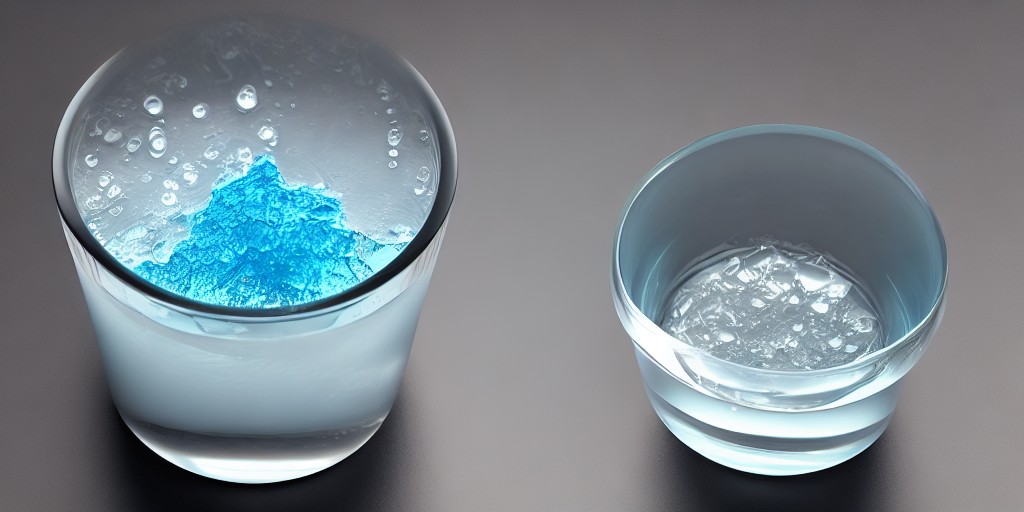
Whether or not Clorox cleaner needs to be diluted before use depends on the specific product.
For example, Clorox clean-up cleaner with bleach should be diluted before use. The instructions on the label recommend diluting one part cleaner with four parts water before using it to clean surfaces.
On the other hand, Clorox disinfecting wipes do not need to be diluted before use. These wipes come pre-moistened with a disinfectant solution and can be used directly on surfaces without any additional dilution.
It is important to read the instructions on the label of the specific Clorox cleaner product that you are using to determine whether or not it needs to be diluted before use. Diluting the cleaner incorrectly can result in it being too strong or too weak, which can affect its effectiveness and safety.
In general, it is a good idea to test the cleaner on a small, inconspicuous area of the surface before cleaning the entire surface. This will help ensure that the cleaner is safe to use and will not cause damage or discoloration. In conclusion, whether or not Clorox cleaner needs to be diluted before use depends on the specific product. Some Clorox cleaners should be diluted before use, while others do not require any additional dilution. It is important to read the instructions on the label of the product and to test the cleaner on a small area before using it to clean the entire surface.
